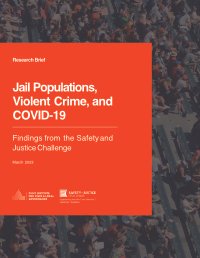By Sana Khan, Emily West, Stephanie Rosoff
In response to the rapid spread of COVID-19 in 2020, jails across the U.S. implemented emergency strategies to reduce jail populations and mitigate the vi- rus’s spread. This included releasing people pretrial while they awaited their case resolution. At the same time, public data show that violent crime and homicides have increased nationally. These increases have put a spotlight on criminal legal reform efforts, with growing public discourse in some political and media circles suggesting that reforms are causing these increases. While the recent uptick in violence is real, this analysis shows that, on average, cities and coun- ties implementing jail population reform efforts successfully reduced jail populations without jeopardizing community safety. To explore whether increases in violent crime were related to the pandemic and criminal legal reforms, the CUNY Institute for State & Local Governance (ISLG) analyzed violent crime, incarceration, and rebooking data from sites participating in the Safety and Justice Challenge (SJC), a nationwide initiative to safely reduce jail populations. This data provided comprehensive information on individuals booked into and released from jail over time, allowing ISLG to capture trends in rebooking outcomes in sites with varying geographies, populations, and jail sizes. The rebooking analysis covers data through April 2021, which is more recent than many well-established data sources.
New York: CUNY Institute for State & Local Governance, 2023. 21p.





















